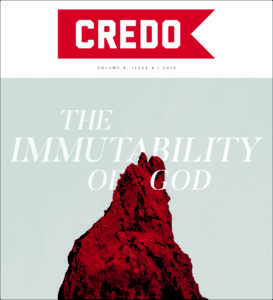Protestant Christians have historically  affirmed the doctrine of Sola Scriptura—God’s Word alone is the final authority for God’s people. This foundational doctrine naturally elicits the question, “What constitutes God’s Word?” Edmond L. Gallagher and John D. Meade provide important historical answers to this question from early Christian sources in their recent book The Biblical Canon Lists from Early Christianity: Texts and Analysis (Oxford University Press, 2017). Gallagher and Meade’s work helps to dispel the “popular idea that a council of bishops, perhaps at Nicaea, restricted the holy books of the church in order to suppress dissident literature” (1). In contrast to this notion, Gallagher and Meade show the historic contours of the canon-formation process.
affirmed the doctrine of Sola Scriptura—God’s Word alone is the final authority for God’s people. This foundational doctrine naturally elicits the question, “What constitutes God’s Word?” Edmond L. Gallagher and John D. Meade provide important historical answers to this question from early Christian sources in their recent book The Biblical Canon Lists from Early Christianity: Texts and Analysis (Oxford University Press, 2017). Gallagher and Meade’s work helps to dispel the “popular idea that a council of bishops, perhaps at Nicaea, restricted the holy books of the church in order to suppress dissident literature” (1). In contrast to this notion, Gallagher and Meade show the historic contours of the canon-formation process.
Gallagher and Meade have produced a specific yet important volume in the field of canon history. Rather than providing a comprehensive historical examination of canon formation, they present one important piece of the puzzle: various canon lists from important early Christian sources. Many of these lists “have remained relatively inaccessible to most people interested in the subject” (xviii). In granting access to these valuable primary sources, Gallagher and Meade allow their readers to experience the intriguing and complex world of early Christian views of Scripture.
The authors have broken up the book into chapters on The Development of the Christian Biblical Canon, Jewish Lists, Greek Christian Lists, Latin Christian Lists, The Syriac Christian List, and Selected Manuscripts. Additionally, they provide a helpful appendix expounding certain “disputed” works in the history of the biblical canon.
After their concise survey of canon history in the first chapter, Gallagher and Meade devote most of the book to presenting canon lists. Each canon list is laid out in a synoptic view with the original language (Greek, Hebrew, Latin, or Syriac) in one column and an English translation beside it. Those versed in ancient languages can read the source in its original language while less advanced readers are able to absorb the English translation. Each canon list in the book is introduced by a short section of historical information on the list’s author(s) and provenance. Moreover, Gallagher and Meade provide readers with some of that list’s textual history, sources for further study, and final comments on its significance in canon history.
Readers will profit from the book’s versatility. The authors have set up the text “in an accessible form for the benefit of students and scholars” alike (xii). Whether one is an experienced researcher in canon history, a ministry worker in the local church, or a divinity student, the material presented by Gallagher and Meade will be extremely profitable. Whether one is an experienced researcher in canon history, a ministry worker in the local church, or a divinity student, the material presented by Gallagher and Meade will be extremely profitable. Click To Tweet
Readers seeking to better understand the history of the Christian canon will profit immensely from the lists presented and analyzed in this book. While each reader will benefit differently from the numerous insights of this book, I will highlight three of the most beneficial in my own reading.
Categories
For many early Christian authorities–Eusebius, Cyril, Athanasius, among others–books of spiritual import were divided into two or three categories of varying authority (108, 117, 128). These categories, loosely defined, were: (1) books of universally-recognized Divine authority, (2) those of less authoritative status but still possessing spiritual value, and (3) those of a spurious and unprofitable nature. This scheme may be foreign to modern Protestants, but it appears routinely in these early Christian writings.
Corpi
Another helpful feature of The Biblical Canon Lists is its presentation of the histories of various corpi within the canon. For instance, a cursory survey of the lists provided in this book shows the fourfold Gospel was held in unquestioned high regard from very early on, but the Catholic Epistles and Revelation received skeptical treatment in certain quarters of the church for centuries. While the lists Gallagher and Meade provide show the significant agreement among most canon lists in the early period, they also show the idiosyncrasies and disagreements voiced by certain early Christian authorities.
Criticism
Gallagher and Meade helpfully introduce their readers to some of the common text-critical issues affecting canon historians. For instance, is the curious omission of Philippians, Thessalonians, and Hebrews from the canon list in Codex Claromontanus the result of scribal error or a pointed statement on the authority of these books (184)? What are scholars to make of the absence of Song of Songs and Ecclesiastes from the Syriac canon list in MS 10 (240)? What weight should scholars give to Origen’s views on canon since we only have fragmentary glimpses of his views preserved in the later writings of Eusebius (85, 87, 89)? Such issues are abundant in the field, and Gallagher and Meade present them with clarity and scholarly tact.
In sum, Gallagher and Meade have gifted modern biblical scholars with a superb contribution to the field of canon history. Though, formally, this book is more of a reference work, it can be read from cover to cover with ease. The first chapter is a complete essay in itself—a careful and concise survey of canon history. While readers should seriously engage the footnotes to fully glean Gallagher’s and Meade’s insights, the overall text is readable, logically structured, and informative. This book will serve sola scriptura Protestants and scholars of all stripes for years to come.


